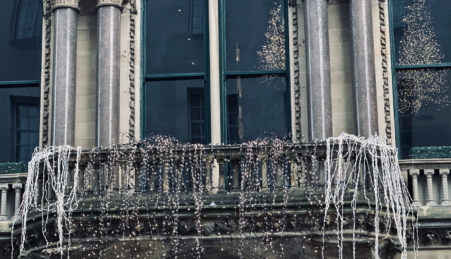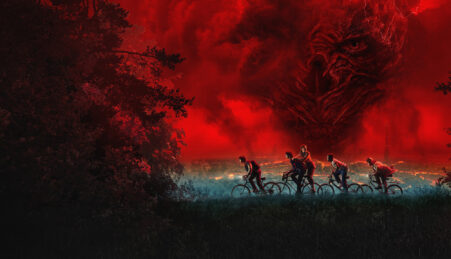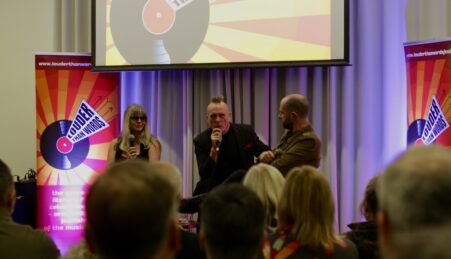By Charlotte Hawksworth
Following the centenary of World War I, many people looked back through modern eyes and struggled to imagine how it might have felt to live through it. Manchester Met Lecturer in the Department of History, Politics and Philosophy Doctor Marcus Morris has recently taken on the challenge of helping the public engage with people’s experiences of this time.
Dr Morris’ project, funded by the Arts and Humanities Research Council World War One Engagement Centre, is entitled ‘Being Young on the Home Front: Young People in North West England during World War One’ and forms part of the ‘Voices of War and Peace’ project. The project will work with local youth groups to help today’s young people study and research the war.
Humanity Hallows spoke to Dr Marcus Morris to find out more about the project.
What inspired you to focus on youth of the North West, growing up on the home front during WWI?
First, and foremost, the centenary of the First World War. This is the perfect opportunity to look at the war from a new perspective and to challenge our traditional understanding of the conflict and its effects. There has been some excellent work that has focused on the soldiers and the war as a military conflict, but there has been much less on the effects of the war at home. In particular, there has been very little work that has looked at what the experience was like for young people. There have been some studies that have looked at ‘boy soldiers’, but what about the young women who wanted to fight? What about those hundreds of thousands of children, often as young as ten or eleven, who worked in the industries? And what about the responses of those children to an adult population that often didn’t recognise their efforts and labelled them delinquents?
These sorts of questions, invariably left unexplored, were at the heart of my thinking. I have chosen to focus on the urban experience in the North West for manageability and also because the groups working on the project are from the North West.
Is there a lot of support from academia for your project? How do you think this will fit in with current research?
Most definitely. Indeed, a colleague from the University of Worcester, is running a complimentary project on the effects of the war on rural young people in the South West. Interestingly, though there were some parallels, their project has highlighted important differences in young people’s experiences. This is important given the tendency to present WWI experiences as shared and monolithic. This is an area that has been under-researched in academic circles, but this is gradually changing.
A conference held at Manchester Met in 2015 saw speakers from across the world speak on a variety of children’s experiences in the war and I will be editing a special edition of a journal on the subject. Nevertheless, there is much that remains understudied and hopefully this project will help to fill the gap in a small way.
What types of sources are you using for your research? How accessible are they?
This is one of the most challenging aspects of the project. How do you find the voice of those who often did not have one? Well, one of the go-to sources is newspaper material from the period, partly because, as a result of digitisation, they are very accessible. Though often talking from an adult’s perspective we can glean information about childhood in the war. We will also be looking at various items produced for children in the period, e.g. children’s literature, toys and games, school items, which can help our understanding of the subject.
There is a wealth of photographic material, which again gives us another glimpse into children’s experiences. Local archives at Manchester Central Library also have a number of sources pertaining to childhood experience in the war and we will be using these. Finally, there are some – though they remain limited in number – accounts from individuals who were children during the war. These will give us an invaluable insight into their personal experiences. There is still work to be done with regards to sources. In part, this is deliberate, as one of the aims of the project is to get those who would not normally undertake historical research to experience the world of research.
How do you intend to make this project accessible to the general public?
The principal participants in the project are local youth groups. In that sense, the general public is the primary audience for the project. Moreover, we aim to make those groups’ productions available to the general public in a number of ways. Through their research we hope that the groups will produce an arts-based output of various types – we have dance, theatre, art, and spoken word (rap) groups participating – that take childhood wartime experience as their central theme. These productions will then be demonstrated in a number of ways. We are planning an event where their productions are shown to a live audience. The whole process will be documented on film and this will be available via a number of websites, plus I will be writing a number of articles on the project for websites and journals with a public audience.
As part of the project you said you will be working with local youth groups. What do you have planned for these groups and how will you link it to the project?
Those groups are central to the project. The project outputs will be based on their research and their productions. Though such groups will be steered by me and my colleagues, we want this to be their work. So, I will introduce the groups to the key issues surrounding young people’s experiences in the war and they will then decide which particular issues they want to delve into further.
Following that, we will bring those groups into Manchester Met to use our resources for research, and we will also take them to the Central Library to conduct further research. Subsequently, they will devise, rehearse and produce their own cultural production based on that research. They will be presenting this to their peers and will also help with the production of the film and articles based on the project. The project, therefore, is based on the groups and their work.
Are there any other areas of WWI that you would like to research following this project?
Undoubtedly, there is much more work to be done on childhood experience during the war. There is also much more work to be done on the lasting effects after the war. Those affected as children in the war would grow into adults whose childhood had been fundamentally impacted by war – and there would not have been a child that was not affected in some way – but society in the 1920s and 30s is often not viewed with such experiences in mind. Therefore, with other colleagues, I’d like to develop the research further, by considering different aspects of childhood experience during the war and the impact of such experiences after the war ended.
Do you think this could lead to similar projects in the future in association with the AHRC?
Possibly. Though I certainly intend to work on other projects with young people, whether it be on the First World War or another topic. I believe that such projects are a way of raising aspirations for many young people. By bringing them into university especially, many participants will think about the possibilities of studying at university. This project is deliberately aimed at youth groups in economically disadvantaged areas, building on previous work with such groups. Such work will undoubtedly continue, funded from a variety of sources, as widening participation should be an important aspect of what we do.
Would you ever consider doing a comparison piece between growing up on the home front of WWI to growing up in the bombed zones of WWII?
Definitely, but don’t forget mainland Britain was bombed during WWI, with a number of children killed during the raids. I think it would certainly be an interesting comparison. Much more academic work has been conducted on the home front in WWII – in part because the effects on the home front are, on the face of it, much more obvious – and that would make comparison easier. They were different wars, though, so it would be interesting to bring out the differences in experience too.





Leave a reply